 Fook Tet Soo Hakka Temple 福德祠大伯公庙 Fook Tet Soo Hakka Temple 福德祠大伯公庙
The Fook Tet Soo Hakka Temple, 福德祠大伯公庙, (formerly known as Fook Tet Soo Khek Temple) in Palmer Road was built by the Hakkas and may have predated the arrival of the British in 19th century Singapore.
The oldest Da Bo Gong temple 大伯公 (Tua Pek Kong) temple in Singapore, the Fook Tet Soo Hakka Temple is a rare example of a temple that has remained in its original location since its founding. The temple’s history has been recorded by Dr. Leon Comber in his 1958 publication,” Chinese Temples in Singapore”.
It was inscribed on a stele that the official construction of the temple started in 1844. The temple was built facing the sea and so was commonly known as the “Sea facing Da Bo Gong temple”, 望海大伯公. Most Chinese temples came into existence on a “bottom up” basis in that a shrine might first be erected by a devotee either out of gratitude or to commemorate a historic event. The shrine’s reputation would then grow, attracting worshippers and becoming increasingly popular to the extent that when resources were available, a proper temple would be built to replace the original, modest structure. Therefore, the history of Chinese temples is often older than its official founding date.
In 1861, the Fook Tet Soo Hakka Temple underwent a major renovation funded by private individuals, social organizations and corporations including pawnshops and Chinese medical halls. The Hakka clan associations, Ying Fo Fui Kun 应和会馆 (Yinghe Hui Guan) and Fong Yun Thai Association 丰永大公会 (Feng Yung Da Gong Hui), were the main benefactors of this project.
After the transformations were completed, the interior of the temple was adorned with couplets and calligraphic scrolls of different periods. These were composed and presented by different dialect groups. The central panel fu yin qun sheng, 福荫群生,dated back to 1903, during the reign of Emperor Guangxu, 光绪. Other important religious artifacts include the yuban, 云板bronze bell and steles dating to the late Qing period.
In the past, worshippers would pray for safety as they went out to fish while new migrants would pray for safety and success in Singapore. They also celebrated social and religious events in the temple. To that end, the temple served a number of social, cultural and religious functions. Although founded by Hakkas, it was patronized by all dialect groups.
In 1957, plans for repair work were rejected by the Urban Renewal Authority (URA). In 1970, URA approved repair works for the interior. Twelve years later in 1982, the temple was acquired by URA and the temple was given a Temporary Occupancy License (TOL).
The management committee is appealing to the government for the temple to be gazzetted as a National Monument. Fook Tet Soo Hakka Temple’s location, history and material culture make it an ideal site for education and research purposes
The temple’s shoreline has disappeared with reclamation works. If one were to stand at the entrance of the temple today and look out, one can literally see how Singapore has “grown” since the temple was first built. The temple’s structure, standing in contrast to modern skyscrapers, gives us a sense of the change in the physical landscape of the area. The temple therefore fulfils an important function as a historical and spatial marker.
Inside the temple, its material culture allows visitors to relate them to larger social issues. The information recorded in the 1861 stele contains a wealth of social information. It shows that as early as 1861, a mere 42 years after Stamford Raffles’ arrival, the Hakka and Chinese community not only had functioning social institutions such as clan associations for mutual support and businesses to sustain livelihood, but also that these different organizations integrated into a larger social system to support projects that generate positive externality.
The couplets adorning the temple are eminently interesting artifacts too. They reveal the function, history or special events held in that location. The couplet can either refer to the temple as a whole or to a particular section such as its shrines or halls, and it has to be composed in a graceful and poetic style. At the same time, it may contain multiple hidden messages that only a select few can understand or decipher. Therefore, couplets carry encoded messages that can tell us a lot about the history place, people and possibly other fascinating, esoteric information that needs effort to be unraveled. Since the temple remains in situ, it offers a context for the couplets to be researched and deciphered. Indeed, the couplets contain a wealth of social data waiting to be discovered.
Today, the Fook Tet Soo Hakka Temple stands amidst skyscrapers and awaiting its fate. Worshippers continue to visit the temple for spiritual and religious succor. Heritage lovers, tourists, archaeologists, anthropologist and historians are attracted to the temple too, for education or research purposes. Meanwhile, the management committee continues in their appeal to gazette the temple so that it can be preserved for future generations.
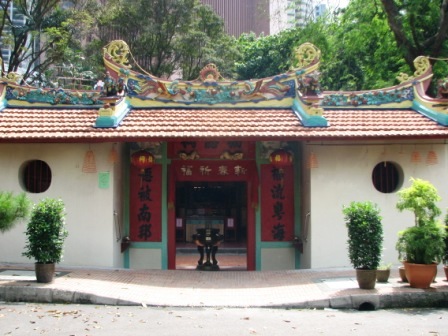 Fook Tet Soo Hakka Temple Fook Tet Soo Hakka Temple
福德祠大伯公庙
Address
50H Palmer Road, Singapore |
Related Articles:
|

 Chinese New Year eve temple visits
Chinese New Year eve temple visits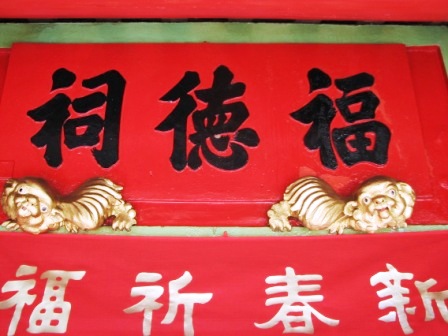

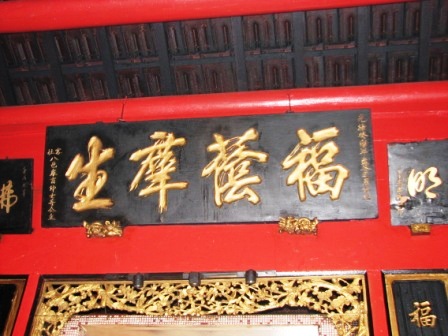
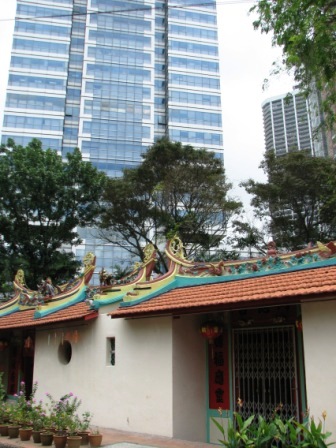
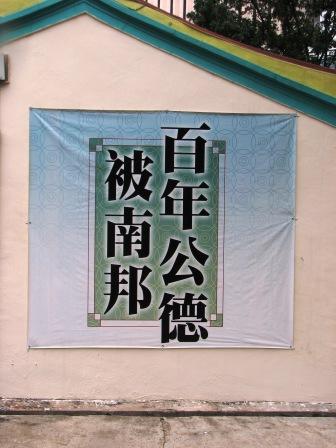
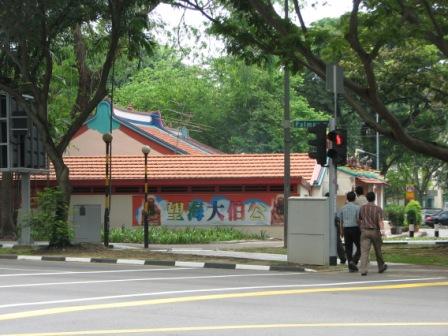

 Fook Tet Soo Hakka Temple 福德祠大伯公庙
Fook Tet Soo Hakka Temple 福德祠大伯公庙 Fook Tet Soo Hakka Temple
Fook Tet Soo Hakka Temple